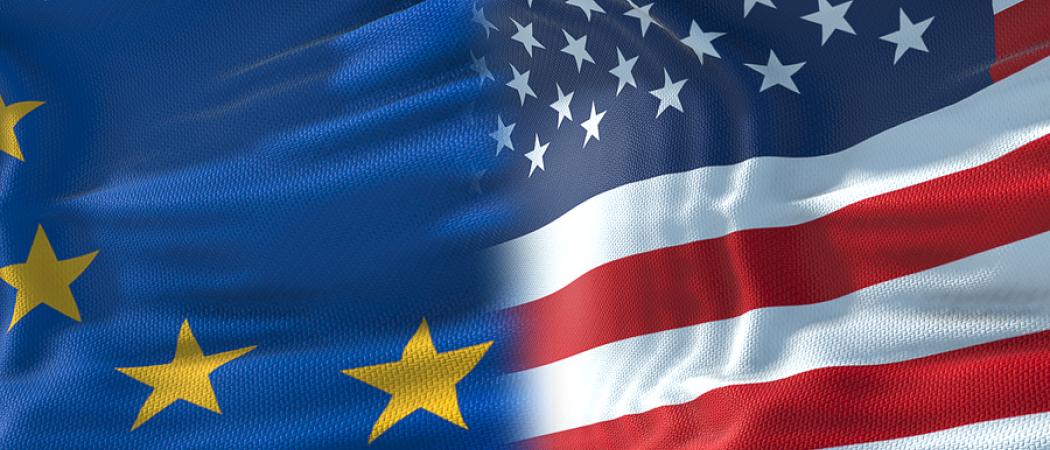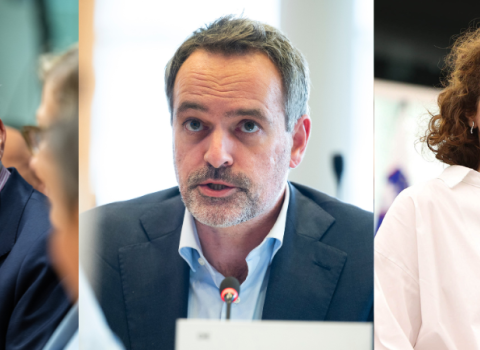US officials meeting counterparts in Brussels on next EU research plan, urge more flexibility to make transatlantic research easier - and ask what ‘associate’ partnership would mean

Despite mounting trade differences, the US and EU have begun discussing ways to boost science collaboration in the 2020s. Meeting in Brussels on July 5, US officials urged EU counterparts to make their science grant rules more flexible, and asked for more information on what formal partnership in the EU programmes would entail.
“We’re really hoping to see greater flexibility that will enable us to have expanded, fair and reciprocal cooperation with all the European research programmes,” said Judith G. Garber, principal deputy assistant secretary of state, in an interview with Science|Business. She blamed a recent drop in US-EU collaboration on the Commission’s grant terms, saying they discouraged US scientists from joining EU projects. A Commission spokesman did not provide immediate comment.
In informal meetings with Commission officials, the US side delivered “preliminary comments” on the Commission’s next research plan, Horizon Europe. It also asked the EU to clarify what was required for a non-EU country to become a formal partner, or “associate member”, of the programme.
“I don’t want to rule it out,” Garber said when asked about the US joining the programme. “If you ask me today, ‘do I anticipate the US would seek associate membership?’ then I would say no. But we would like to understand more what is meant by that, so we’re asking questions.”
The US-EU meetings reflect a rush of international interest in the Commission’s fast-growing research programmes. On June 7, the Commission proposed a seven year, €94.1 billion plan for Horizon Europe, plus several billion more for digital, nuclear and other technology programmes. It opened the door to greater international cooperation, including increasing the number of associate members from 16 today to embrace a post-Brexit UK, “as well as other countries with proven science, technology and innovation capacities.”
The partnership dance
The wording, deliberately vague to avoid prejudicing the Brexit negotiations, has set off a flurry of meetings between the Commission and other countries. Possible partners include Canada, Mexico and China. Beijing has already committed €30 million to EU science cooperation under the current programme, Horizon 2020, according to Commission officials. And Mexico and Canada are both turning towards Europe as a counterweight to their increasingly uncivil neighbour.
US-EU collaboration in science has long been both a prize and a problem for Washington and Brussels. A regular flow of scientists and data cross the Atlantic in every domain, from oceanography, to health and digital research. The EU and US are the biggest scientific powers in the world.
Garber noted that 15,000 European researchers visited US Department of Energy facilities last year. Meanwhile, the US, EU and Canada just kicked off a big joint effort to map the floor of the Atlantic Ocean and collaboration between US and EU earth observation satellites permits the US to track and predict hurricanes in the Caribbean. Noting the proposed jump in EU budget for research, “it would be great if we could allow for enhanced cooperation,” she said.
But so far, most of the formal science collaborations are bilateral arrangements between individual US agencies and EU member states, such as Germany, France and the UK. Cooperation with the Commission has actually fallen. As a share of all “participations” in Horizon 2020 – project by project partnerships throughout the programme – US involvement has dropped to about 0.35 per cent of the total, from 0.5 per cent in Horizon 2020’s predecessor, Framework Programme 7, Commission data suggest.
Details matter
The reasons are messy and complex. Some US universities complain that the EU grant contracts have unacceptable terms, such as restrictions on their intellectual property rights and requiring disputes to be settled in European courts. Garber called that an example of the EU “seeking to apply its [own] rules” rather than letting the leaders of each research project work out how best to set up the collaboration.
EU officials counter it is the US system that is difficult, with unnecessary legal complications, insufficient attention to international collaboration from Washington, and a funding system which is maddeningly fragmented and unpredictable. As one example, the Trump administration proposed a massive cut in science funding, only to have the budget increased by Congress.
It is also the case that on some research issues such as global warming, the Trump White House and Brussels simply do not agree. “I suspect the strongest area of collaboration will not be climate [science],” Garber acknowledged.
Garber said the US wants the EU to build more flexibility in how it structures its programmes for international collaboration from the start of Horizon Europe, because doing so would automatically lead to simpler grant contracts and more collaboration. “At the end of the day, details matter. That’s why we’re having this conversation [with Brussels] at an early stage about what Horizon Europe looks like.”





 A unique international forum for public research organisations and companies to connect their external engagement with strategic interests around their R&D system.
A unique international forum for public research organisations and companies to connect their external engagement with strategic interests around their R&D system.